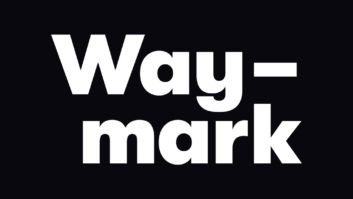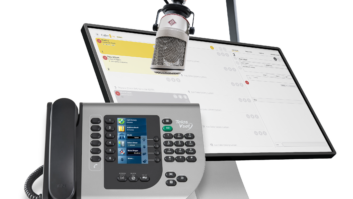When I was asked to take a look at ACID Pro 7 audio editing/creation tool from Sony Creative Software, I jumped at the chance.
I’ve been a long-time user of its sister program, the video NLE Vegas, so I was curious to see not only how ACID stacked up against other audio platforms I’ve used, but how similar it was to Vegas, which began as an audio production platform but later moved into digital video.

ACID hit the scene in 1998 as a sample-based loop editor and music creation tool. Over the years it evolved in that direction, but in 2006, Version 6 included basic audio recording and editing features. Version 7 brings those features to a new level, adding a new mixing console window, time stretching capability and a powerful MIDI sequencer.
I used ACID Pro 7 on two platforms. One was a custom-built DAW with a Pentium 4 2.4 GHz CPU and 1 GB of RAM, using a Soundscape Mixtreme 192 16-channel sound card. The other was an IBM ThinkPad laptop with a Pentium M 1.7 GHz CPU with 768 MB of RAM, using the built-in stereo sound card. Both run Windows XP with Service Pack 2. Not exactly state-of-the-art, but not antiques either.
The install went smoothly on both machines, and neither had any problem running the software. The software supports a host of files, from WAV to MP3, AAC, WMA, FLAC, JPEG and just about anything else I could think to throw at a Windows-based DAW. It handles audio up to 24-bit/192 kHz. It also supports DirectX and VST third-party plug-ins, although it comes with plenty of processing and effects goodies of its own.
The ACID Pro 7 package also includes an additional $500 worth of extra software including the ACID Pro Effects Rack from iZotope, the Native Instruments Guitar Combos amp simulator, the Garritan ARIA for ACID Pro player sound library and the Submersible Music KitCore drum file library.
Layout
The workspace in ACID is fairly simple. You have one screen with a timeline, where the various tracks reside and the editing is done. Above that there are various menus, followed by the customizable toolbar. Below the timeline is the Window Docking Area, where the Mixer, Explorer, Media Manager and any of several other windows reside. Any of these windows can be “undocked” and dragged to any other part of the screen at your convenience, as well as resized. The desktop color scheme can be customized, along with keyboard shortcuts. In short, if there’s something the user doesn’t like about the layout, it can be changed.
Using a few basic tools, it is possible to cut, splice and otherwise manipulate audio clips with relative ease.
The most common tool I found myself using was the Draw tool. Moving audio clips, called “events” in ACID-speak, was easy enough. If I wanted an event to be shorter or longer, I simply had to place the tool at the edge and, while holding the left mouse button, drag the edge of the event to where I wanted it.
Fading a piece of audio in or out is as simple as grabbing the top corner of the event and dragging. The fade appears instantly, and its duration is determined by how far you drag. Right-clicking on the fade brings up a window that gives you several fade envelopes from which to choose.
These and a few other features are obvious carryovers from Vegas, and are similar to other platforms, which makes learning the program easier.
Other tools include the Paint tool, which allows you to place audio across several tracks at once, and the Erase tool, the name of which is self-explanatory.

Version 7 brings its features to a new level, adding a new mixing console window, time stretching capability and a powerful MIDI sequencer. Since ACID was designed to be a music production tool, the timeline is laid out according to beats and measures, but a time ruler of hours:minutes:seconds is available. This took getting used to. I would have liked to be able to change the timeline grid to follow the time ruler instead of being stuck with beats and measures. But this is hardly a deal-breaker.
Each track in the timeline has individual controls for level, panning, phase, solo and mute, as well as automation, bussing, effects and a little scribble strip for name the track. There’s also a level meter. The controls for each track are duplicated in the Mixer window, which is laid out intuitively. The Mixer view is customizable, allowing the user to choose which features are visible.
Another interesting feature of ACID is the ability to create what are called “Folder Tracks.” As a means of reducing workspace clutter, users can take any number of individual tracks and place them in Folder Tracks. Think of them as subgroups. If there are 10 tracks devoted to drums, all can be placed in a single Folder Track; then collapse that folder in the timeline, making it easier to navigate through your mix.
At work
Recording in ACID is about as straightforward as it gets.
Add an audio track (if one does not already exist), select which soundcard to use, arm the track for record, and hit the record button. When done, ACID asks what the track should be named, and whether it should be kept it or deleted. When a track is armed, the meter for that track shows the incoming level. This can all be accomplished from either the Timeline or the Mixer. Recorded audio, as well as imported audio, can be Beatmapped to accommodate mixing with sample loops later.
Since ACID started out as a sample loop editor, it of course retains that pedigree and all the features that go with that. Each new project has a user-selectable tempo, time signature and key. Any sample loops imported into the program automatically are transcribed and speed-adjusted to fit.
So where do these sample loops come from? Did I mention that ACID Pro 7 includes about 4 GB(!) of content in the form of loops, patterns, and templates in every genre from classical to techno? Crayola wishes they made a box of crayons this big.
It’s a simple matter to grab any number of loops or “one-shots” (what ACID calls musical bits that are not meant to be looped), and create custom music beds, stingers and bumpers of any length in any style. Imagine the money you can save on production music.
If the included content isn’t enough, users can create their own, or visit Sony’s Web site (www.sonycreativesoftware.com) where users can download eight free new loops every month. The sample loops can also be combined with separately recorded loops or MIDI tracks. I was able, simply by plugging in the correct tempo, to replace the drums in an already recorded project with a sample loop. ACID also has a Groove tool that can be applied to drum loops, imparting a more “human” feel to the rhythm. There are dozens of grooves at your disposal, from rock to swing to polyrhythms.
It burns!
Of course it burns. It’s “ACID,” after all.
I was pleased to see that one of my favorite features of Sony Vegas was included in ACID, namely the ability to burn CDs directly from the editing timeline. Some DAWs include CD burning, but you usually have to first render the mix to a stereo WAV file. Not so in ACID.
Simply arrange the tracks, make edits, add plug-ins, set levels and when the mix is satisfactory, add Track ID markers to the timeline, drop a blank CD in the burner, and from the Tools menu select one of two methods of burning a CD. Select Track-at-Once for burning one track at a time, or the more popular Disc-at-Once, which turns what is seen in the timeline into a duplicator-ready, Red Book-compatible, audio CD.
This feature is a great timesaver. You don’t have to create a stereo file of your mix in order to put it on CD; and you no longer need a third-party application to burn it.
Because I’m reviewing ACID for radio applications, I have concentrated on the features that would be most useful in a radio production environment. But that only covers some of this program’s capabilities.
It is also an able-bodied MIDI recorder and editor, allowing artists seamlessly to incorporate their MIDI sources and controllers into their DAW setup. It also has a video track and video preview window, allowing users to do audio post-production and sound design work.

Speaking of video, ACID can mix in 5.1 surround and export surround mixes as Dolby AC-3 files for use in DVD production.
Another useful feature for the broadcast user is the “Fit to Time” feature, which automatically adjusts a project’s tempo to a specific time. For example, if you have a music bed that needs to be 30 seconds long, but you don’t know the exact tempo it should be to fit; by using the “Fit to Time” feature, the exact time the audio should be can be selected. ACID will automatically adjust the grid and tempo to match this exact time.
Litmus test
I found that Sony ACID Pro 7 delivers considerable bang for the buck, especially at its competitive $300 street price.
Its editing and production features, in my opinion, leave many well-known DAWs in the dust, and without the need for proprietary hardware that some require. It proved to be stable as well.
While it is primarily geared more toward music production, I found it to be equally adept at handling just about any piece of audio I threw at it. The fact that it comes with an additional $500 worth of software plug-ins and content certainly makes it well worth the price of admission.
As with any platform of this nature, the learning curve can seem daunting. Even with my intimate knowledge of Vegas, it took getting used to. A thorough read of the included Quick Start Manual will get the beginner well on way with the basics (the full manual can be downloaded from the Web site). The included Interactive Tutorials are great for walking you through some basic procedures.
Another piece of advice: Make good use of the right mouse button. Right-clicking on just about anything in this program will reveal pop-up menus that contain handy features and shortcuts. But I can almost guarantee that, three or four months into using it, you’ll still be discovering features. Whether that’s a plus or a minus depends on your point of view. An argument could be made that ACID is trying to be all things to all people; I think it’s simply taking the original concept of a music production application and kicking it up several notches.
Either way, it’s worth your time to download the demo and see for yourself.
Curt Yengst, CSRE, is assistant engineer at WAWZ(FM), Zarephath, N.J. He is also a freelance recording engineer.












